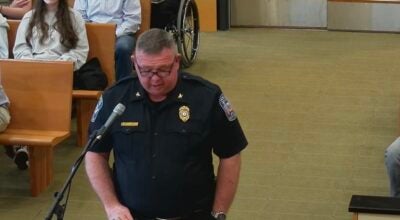Forestry plays critical role for Central Virginia farms
Published 6:47 am Wednesday, March 8, 2023
|
Getting your Trinity Audio player ready...
|
A tree was planted 15 years ago. Today it was harvested. Tomorrow it will be processed into essential fiber, wood products and electricity, and next year another tree will be replanted in its place.
This regenerative cycle of forestry activities produces $23.6 billion for the state’s economy and employs over 108,000 people, comprising Virginia’s third-leading private industry. Forestry experts say logging activities are a powerful forest management tool, creating new wildlife habit and enhancing biodiversity, executed with methods that preserve and improve forested landscapes.
Loblolly pine and yellow poplar are the most common trees in terms of volume, according to the Virginia Department of Forestry. Timber is harvested for lumber, milled, and cut into boards or planks for building materials. Smaller trees, salvage and waste are processed into chips or pellets used for biomass — burned to harness electricity.
While forestry activities occur statewide, Brunswick County is Virginia’s most heavily logged area, where loblolly is king.
Planted pine is adaptable and resilient, said forester Joey Jones of M. M. Wright Inc. “We grow them for straightness, height, circumference, pest resistance and growing time,” he said.
Hardwood forests don’t typically need replanting.
“You can come back to cut the same hardwood site over and over again,” said Timothy Goodbar, a Central Virginia logger. “Plus, young forest is good turkey and deer habitat and allows water to permeate the soil.”
In a nearby area, lifelong forester C.K. Greene of Virginia Custom Thinning & Chipping has trained his team to selectively cut undesirable trees, making space in the stand for the best pines to grow big, fast.
“We leave 200 of the biggest and best quality in the stand,” he explained. “We take out forked trees, the runts, and leave enough trees per acre to have a valuable crop to grow.”
The VDOF-managed Reforestation of Timberlands program helps ensure a stable supply of pine while supporting rural jobs. It provides cost-share assistance to landowners for pine reforestation and is funded by the Virginia Forest Products Tax with matching funds from the state’s general fund.
For decades, Virginia Farm Bureau Federation has worked to make timberland owners aware of reforestation incentives while advocating for state matching funds.
“As a grassroots organization, we see the importance of providing landowners with assistance in planting trees and supporting the overall forestry industry,” said VFBF President Wayne F. Pryor.




